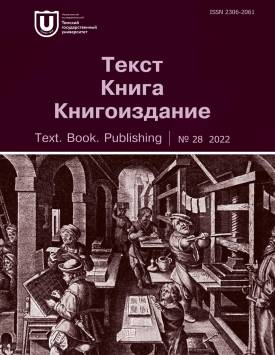Yevgeny Zamyatin’s “hypertext” about the female warrior. Article II
The second article of the two-part cycle considers the most important element of Zamyatin’s “hypertext” about the female warrior, i.e., the tragedy Atilla. The author offers the genealogy of the play’s heroine, Il’degonda, from Brynhildr of the Poetic Edda and Wagner’s Brunnhilde to Ibsen’s Hjordis (The Vikings at Helgeland) and N. Gumilyov’s Lera (Gondla). The common elements of Atilla and variations of the story of the Nibelungs are analyzed in detail: the association with the Burgundian locus, the parallels between the main characters and wolves, the connection of the heroine to the mythologem of fate, her identification with the snake, the motif of the broken vow, the motif of flames. The specific correlation of two female characters in Atilla (Il’degonda and Kerka) is highlighted. It strongly resembles Ibsen’s “paired” heroines: demonic and idyllic, breaking the confines of gender stereotypes and “normative”, such as Hjordis and Dagny in Ibsen’s tragedy The Vikings at Helgeland based on the Volsunga saga. Together with the “Valkyric myth” and the archetypal story of Siegfried and Brunnhilde visible in the plot of Atilla, the genetic relationship between The Vikings at Helgeland and Atilla is described as highly probable. The analysis of the play shows that, though this type of heroine is represented in Atilla in a very elaborate way, it still begins to blur due to the non-canonic relationship between the female warrior and the chosen hero. This tragedy features almost all obligatory elements of the motif complex and the plot, which are characteristic for this heroine, but lacks the most important component, i.e., the heroine’s love for the “strong one”. While losing the ability to love the chosen hero, the heroine also ceases to conform to the heroic image of the female warrior. Il’degonda not only loves the character unequal to her in strength, namely, the cowardly Vigila, but also forgives him his shame (the corporal punishment which he chooses over death), which is unthinkable for a true female warrior. Moreover, Il’degonda herself not once succumbs to cowardice (which is impossible for the heroine of this type). Finally, she kills of the rebellious boy slave - an ambiguous act which undeniably goes beyond the heroic behavior. Thus, though elevated above other Atilla’s enemies, she is only half-“courageous” and half-“strong” - just the way she is made, in Zamyatin’s words, “of the same metal as Atilla” only “halfway”.
Keywords
female warrior, Yevgeniy Zamyatin, gender, femininity, Atilla, Brunnhilde, Henrik Ibsen, The Vikings at Helgeland, HjordisAuthors
| Name | Organization | |
| Zuseva-Ozkan Veronika B. | Gorky Institute of World Literature of the Russian Academy of Sciences | zuseva_v@mail.ru |
References

Yevgeny Zamyatin’s “hypertext” about the female warrior. Article II | Tekst. Kniga. Knigoizdanie - Text. Book. Publishing. 2022. № 28. DOI: 10.17223/23062061/28/2
